Ashton Athletic vs Ashton Town. 09.01.24
Joe Marshall- @joemarshall_
Very few things are as unique to football as a local derby. Often fuelled by local, political, religious, class and sporting divisions, no other sport does regional grudge matches quite like football. They are also a window into the psyche of a local population, working and living shoulder to shoulder with friends, colleagues and families through the week, but with the blow of a referee’s whistle, hated enemies are forged on a Saturday afternoon. I’ve been lucky enough to attend a few of the country’s biggest cross-city derbies, including Sheffield and Manchester’s events, but for my latest voyage, I attended what I expected to be a much more low-key affair; Ashton Athletic vs Ashton Town.
Ashton-in-Makerfield
Located on Greater Manchester’s most western edge, Ashton-in-Makerfield is a town of around 26,000, set in the southern section of the borough of Wigan. It isn’t Greater Manchester’ only Ashton, and I would imagine that locals may grow tired of lazy assumptions that their town is somehow connected to Tameside’s Ashton-under-Lyne, located some 30-odd miles to the east.
Ashton (in Makerfield’s) commerical history has roots in the cotton, potteries and coal mining industries. The town’s mining legacy is such that it is in fact the birthplace of former president of the National Union of Mineworkers, Joe Gormley. Sports fans in the area are well catered for. As well as the two football sides that I was in attendance to see, Ashton is only a stones throw away from Haydock racecourse, and around 4 miles south of the DW Stadium, home of Wigan Athletic and Wigan Warriors. By rail, Ashton is served by Bryn station, which can be accessed via Wigan North Western station for travellers coming from Manchester or Liverpool.
For this Tuesday night trip, we travelled in the car. Traffic from Manchester meant that the journey on the M56 took longer than we hoped, but left in enough time to stop at the pleasant Simms Road pub for a quick drink before completing the final leg of the journey to Brocstedes Park.
Brocstedes Park
Brocstedes Park is a small but charming ground set in the north of the town. As arrivals at football grounds go, this was one of the more challenging. Driving down the dimly lit Brocstedes Road, the entrance to the ground sprung up on us sharply on the right hand side. A short bout of rallycross later, we had navigated the suspension-stressing road and reached the entrance to the club’s sizeable car park.
The traditional turnstiles gave a typical non-league welcome, and with the £6 entry fee paid, we made our way inside to take in our surroundings. Brocstedes Park has two noteworthy stands, both of which have seats and offer cover. They are both located on the same side of the pitch, close to the goal at either end, with standing space and snack bar in between. The location of both these stands mean that supporters have the opportunity to sit close to the goal their team is attacking all the time, even if the smaller of the two is labelled “officials only!” Fencing is erected around the perimiter of the pitch, of which all four sides are accessible, even the largely unoccupied far side, which has a large patch of grass behind it that is often used for player warm ups. Behind both goals there is space for spectators to stand, making it an excellent ground for supporters who want to take in the action from a variety of angles.

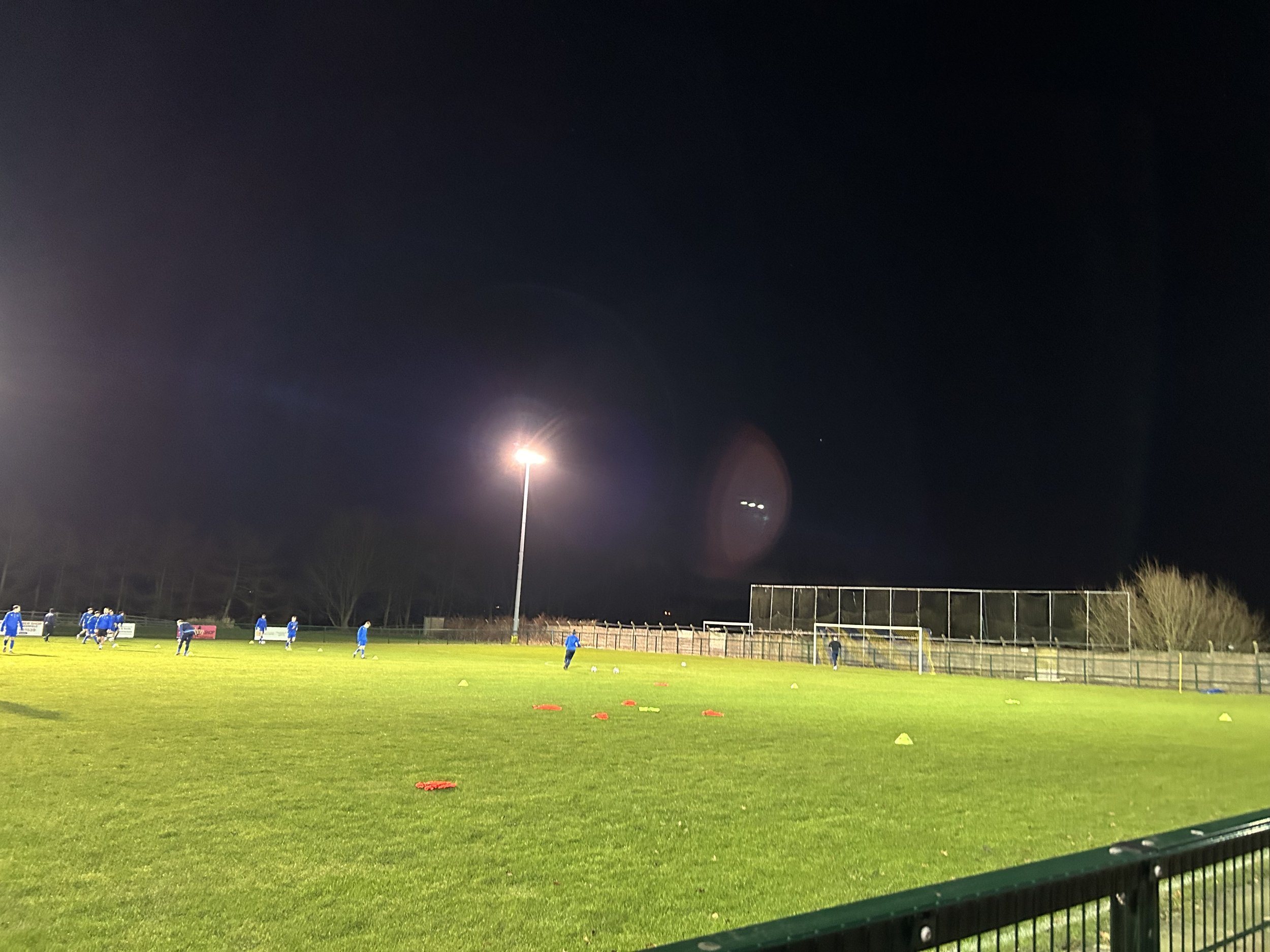
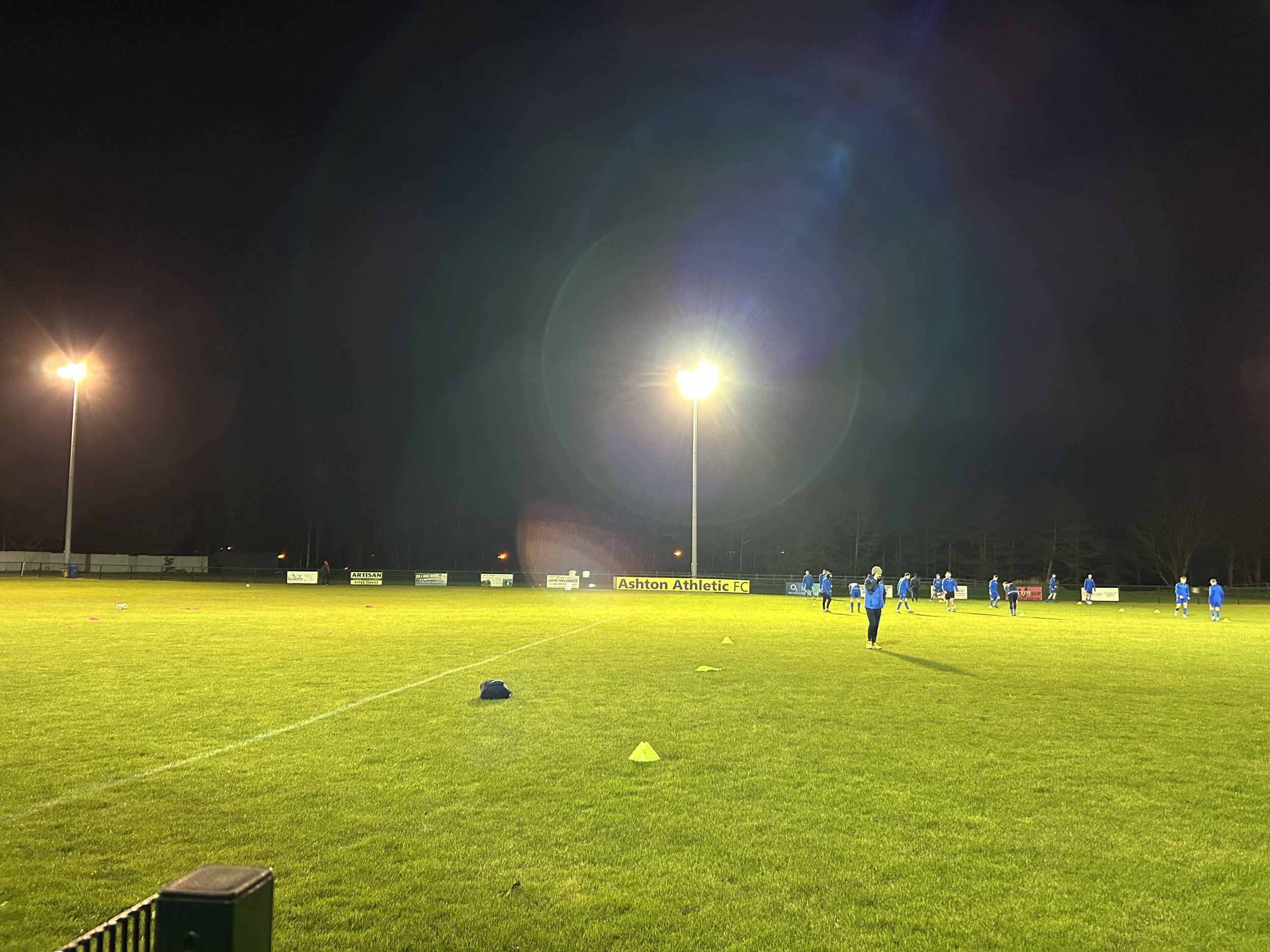
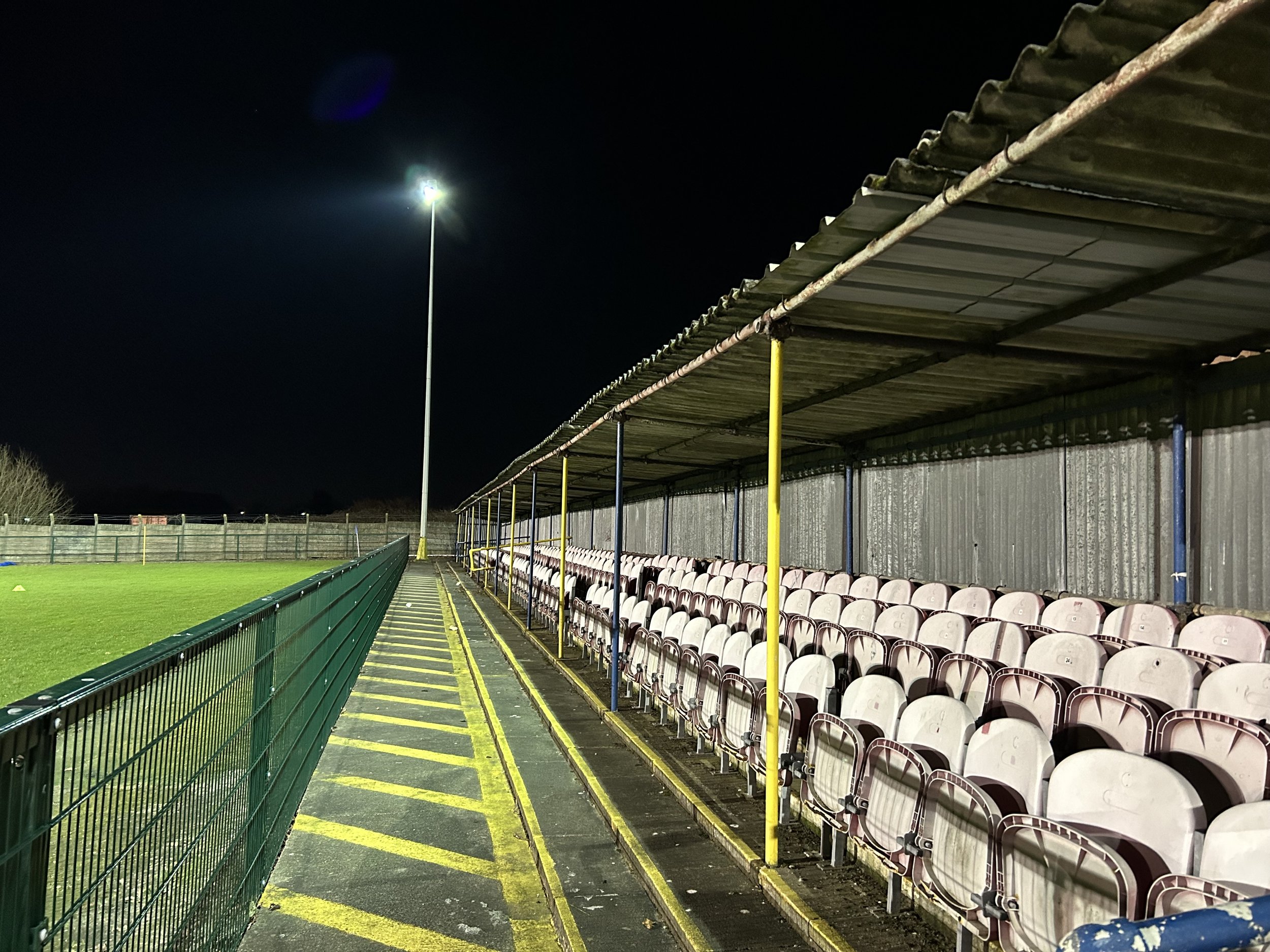
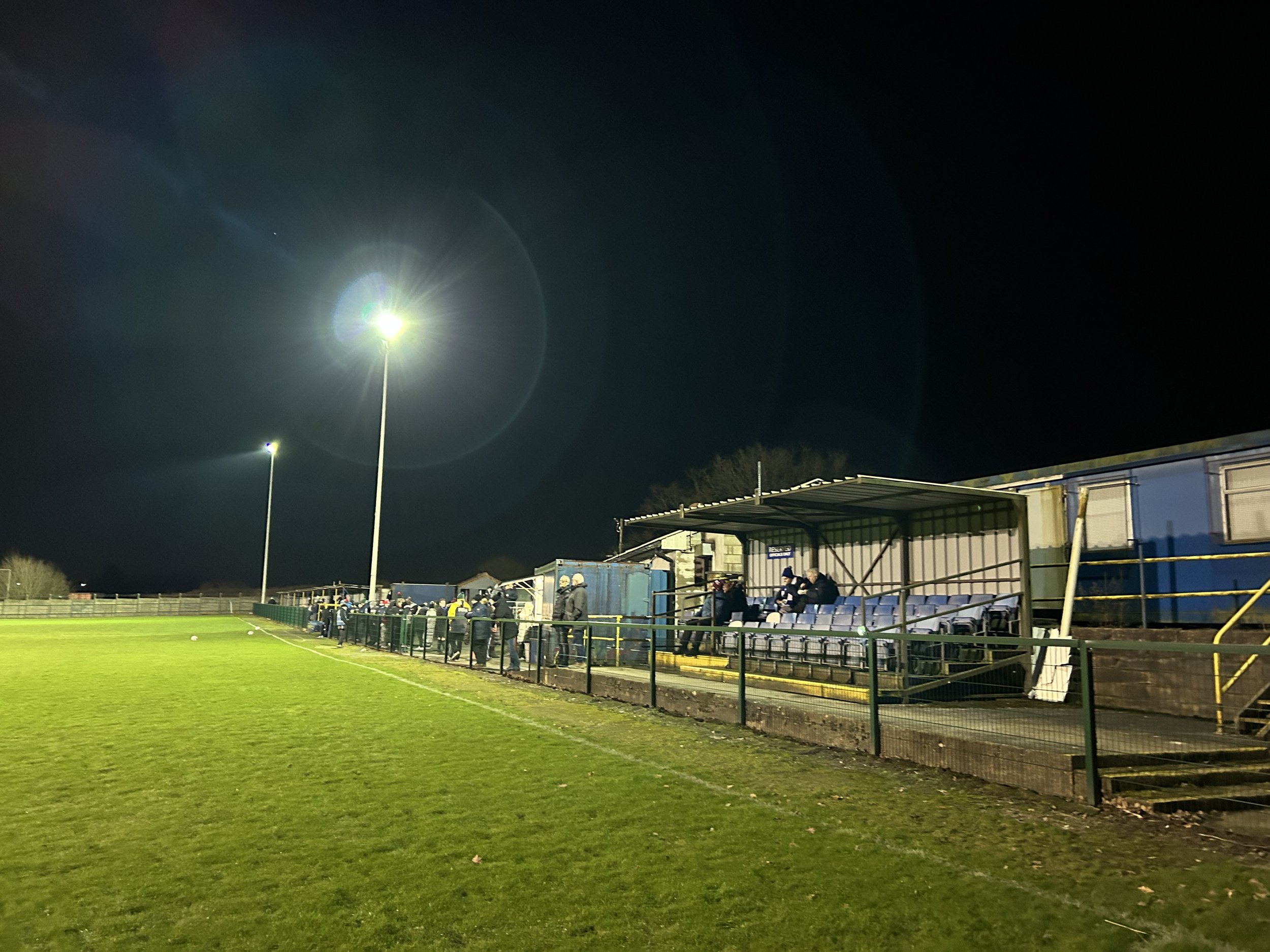

Brocstedes Park Experience
The clubhouse is located on the busier side of the ground, between the two covered stands. Decently sized and with plenty of seating, the bar is well stocked and offers good views of the pitch for supporters seeking warmth. A pint of Heineken Silver set me back a reasonable £4, but with close to freezing temperatures outside, it was the Bovril from the snack bar that was my most enjoyable beverage of the evening!
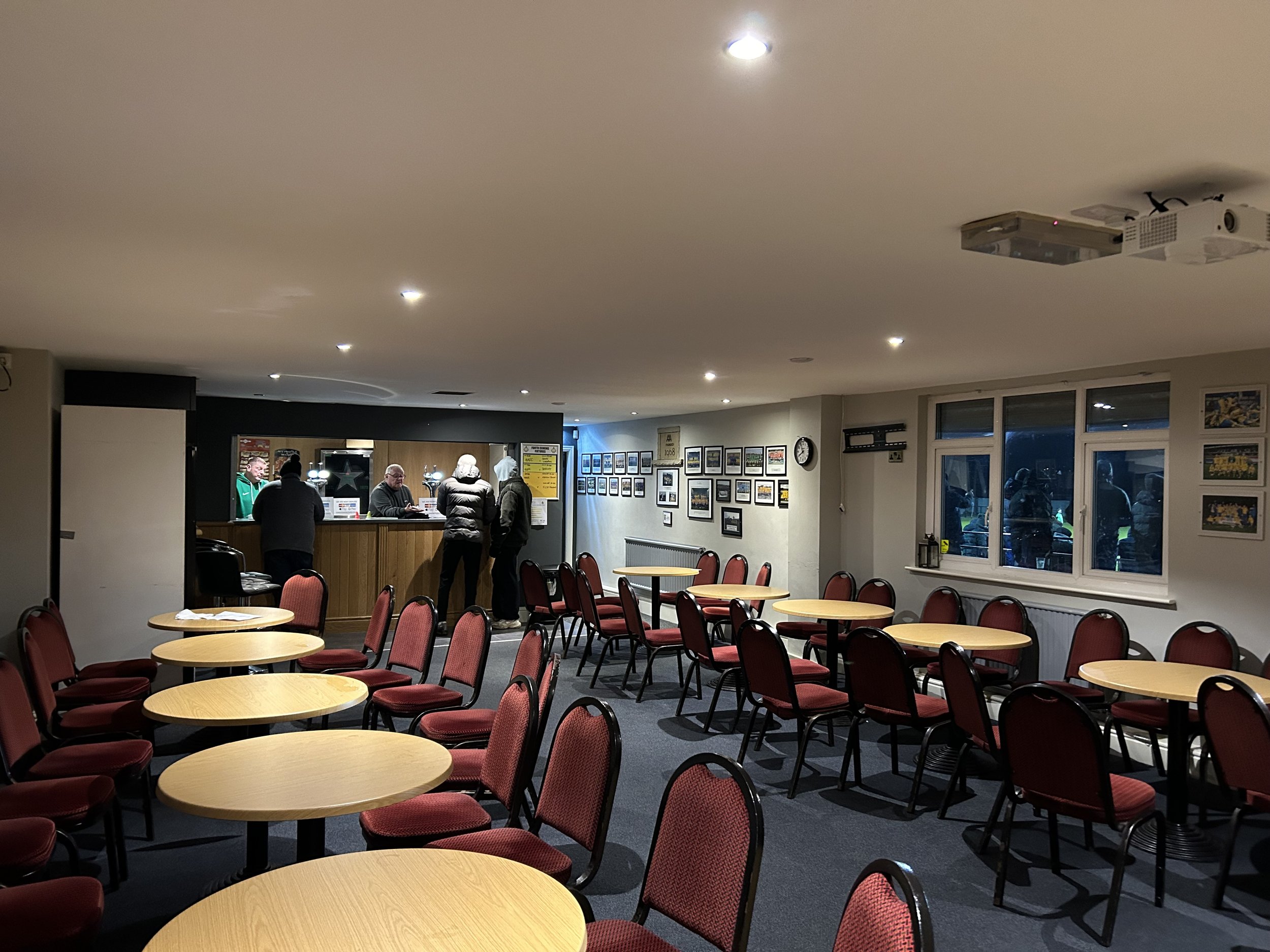
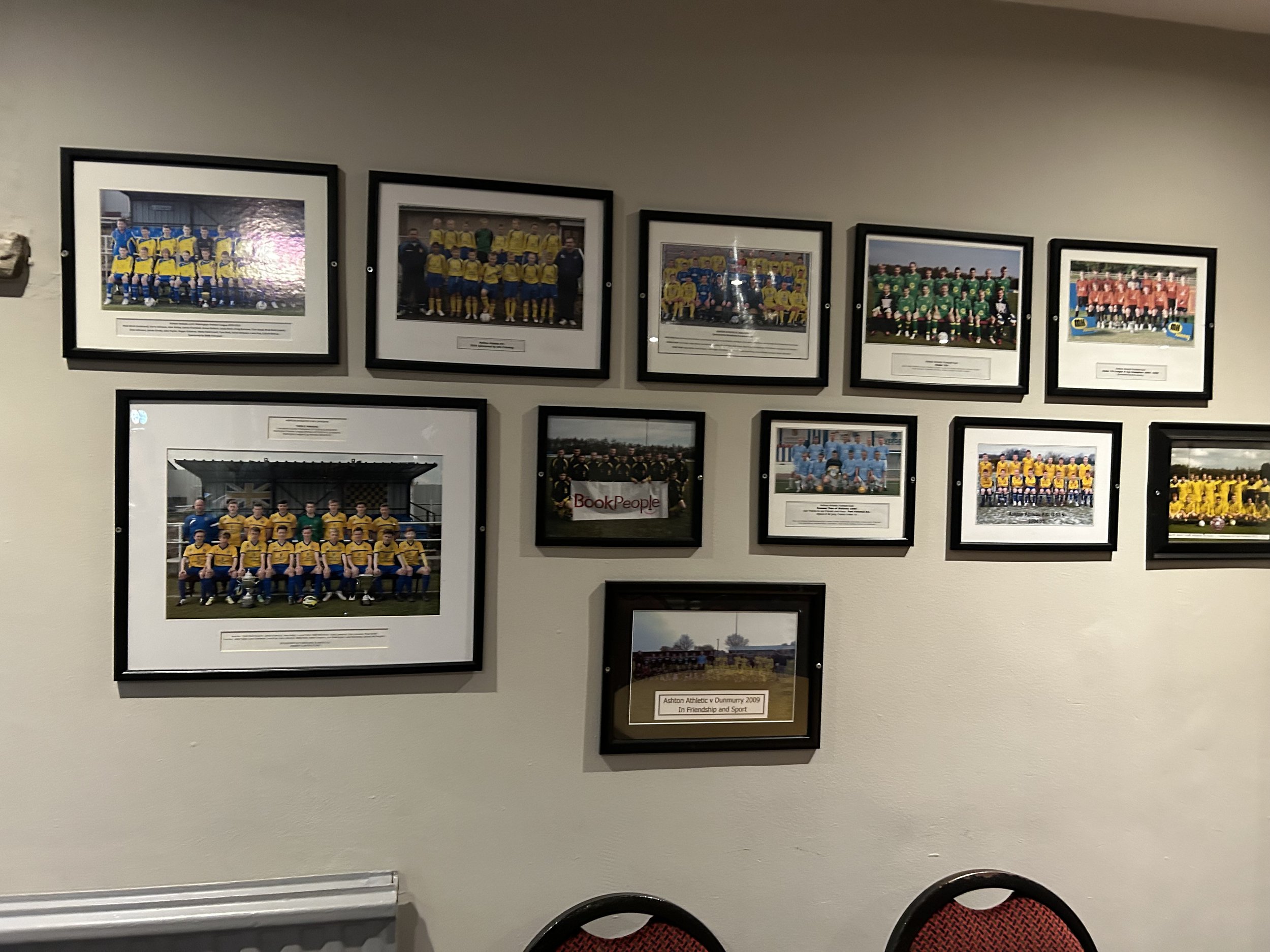
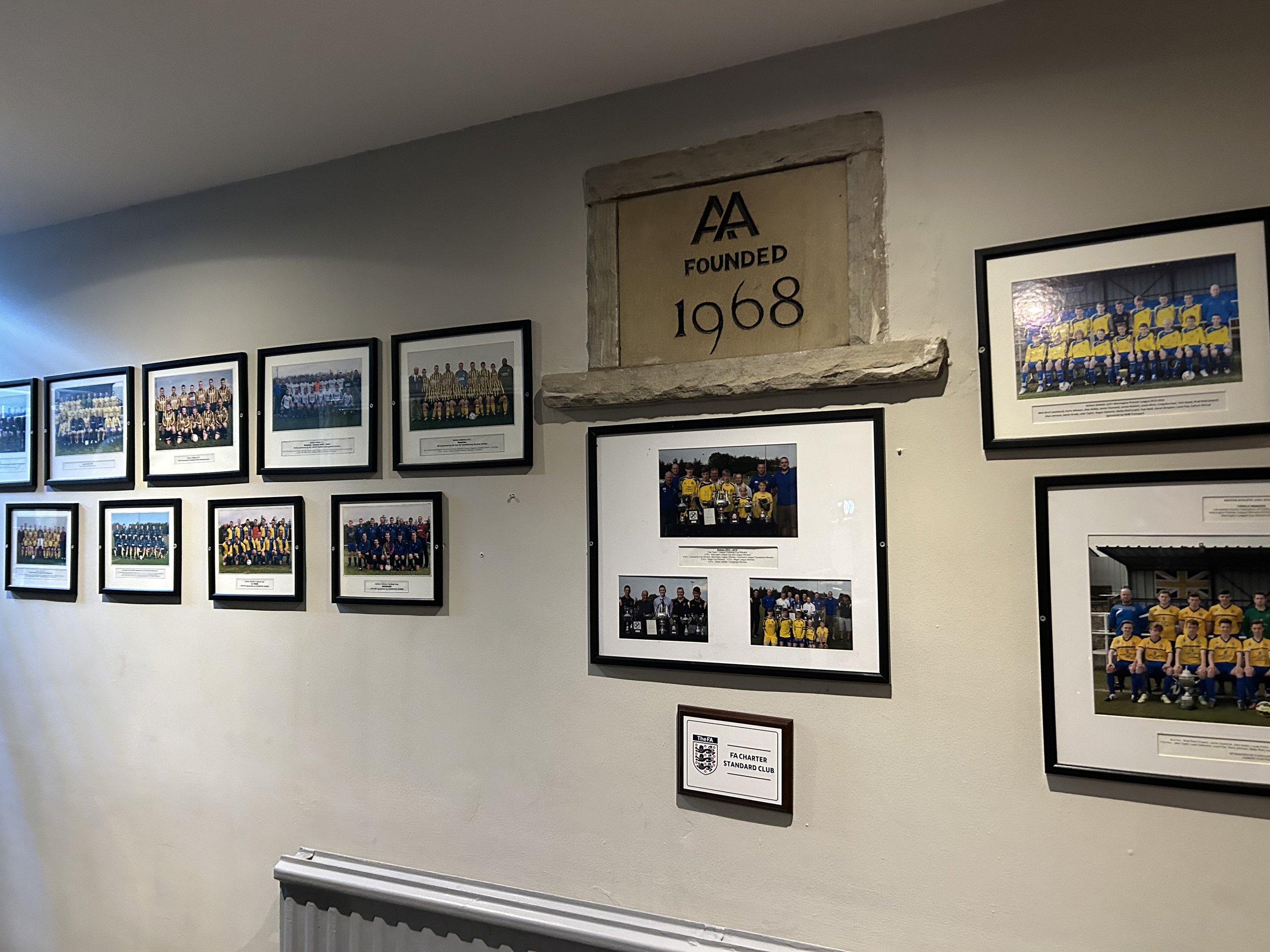

Being in Wigan, notorious pie heartland, I had high expectations for my meat and potato filled tea, and I was not disappointed. Although a little dry at times and lacking the option to smother in gravy, it was beautifully in temperature well stuffed with fillings. The snack bar also served hot dogs and burgers, which I am led to believe are also great value.
Ashton Athletic History
Ashton Athletic were founded in 1968, initially playing in the Wigan Sunday League. The club quickly became one of the strongest in the area, accumulating multiple league titles and cup successes, rising up the Wigan Sunday League system, in the process. They then switched to Saturday football, in the form of the Warrington & District League.
Develpment of their Brocstedes Park home and on-field success meant they soon switched to the Lancashire Combination. However, the club finished bottom of the league in two of their 4 seasons in the Combination, before the North West Counties Football League was born through a merger with the Cheshire League. They were placed in Division Three in the competition’s inaugural season in 1982/83, but continued to find themselves languishing at the foot of the table.
‘The Yellows’’ time in the NWCFL came to and end in 1986. After successive seasons of on field struggle, Brocstedes Park failed ground grading requirements, and Ashton Athletic were relegated to Division One of the Manchester League, where they spent several seasons conducting a re-build.
The re-build not only consisted of a more youthful approach to assembling a playing squad, but it also sought to bring Brocstedes Park back up to the standards required by the NWCFL. These improvements yielded the desired outcome, thanks to a fourth place finish in the Manchester League Division One acceptance into Division Two of the NWC ahead of the 2006/07 season. They built on this momentum that season, by lifting the Atherton Charity Cup. The club continued its rise shortly after, finishing third in the 2007/08 season and reaching the NWCFL Premier Division.
The Yellows travelled to York City in the 2018/19 FA Cup second qualifying round. Photo credit: York Press
Ashton began the last decade with several seasons of struggle in the Premier Division, finishing in the bottom three on several occasions, but escaping relegation thanks to reprieves brought on by their competitors’ variuous shortcomings. The Yellows managed to stabilise for the remainder of the decade with consistent upper mid-table finishes. A standout calendar year came in 2017, when they followed up a Lancashire Challenge Trophy victory by reaching the third qualifying round of the FA Cup for the first time. Despite losing 1-0 against Chorley of the National League North, many positives could be taken from the encounter, including a record attendance of 610. Ashton made it back to back runs in the FA Cup, reaching the second qualifying round in 2018, earning the chance to play at York City’s famous Bootham Crescent. a 5-0 defeat followed, but another positive season nontheless.
Ashton Athletic defeated Radcliffe Borough at the Macron Stadium to lift the Lancashire Challenge Trophy in 2017. Photo credit- NWCFL website
Their stint in the NWCFL Premier came to an end last term, where a disappointing campaign saw Ashton relegated back to the First Division North. This season, they have achieved a mixed bag of results and occupy a mid-table position, albeit closer to the relegation zone than to the playoff positions.
The Match
The match itself was a highly anticipated Ashton derby between the Yellows and their neighbours based three miles to the east; Ashton Town. Despite originally scheduled for Boxing Day, the atrocious Christmas weather meant that the sides had to wait until this particular Tuesday night, to face off. Despite Athletic’s home advantage, Town were arugably the favourites ahead of kick off, with a ten point advantage over their opponents.
The game began in an even manner, both sides testing each other out, with Athletic seemingly having more of the ball. Their early possession proved fruitful when they took a 13th minute lead. To be completely honest, its difficult to properly describe the goal as I was queueing up for a Bovril! From what I could ascertain, Callum Mahoney got the final touch to force the ball over the line after what looked like a bit of chaos in the Ashton Town box.
Ashton Town then began to grow into the game a little, but neither side were able to sustain lengthy periods of attack in the cold conditions. The game fell into a period of attrition before the visitors equalised in the 33rd minute. A cross from the left hand side was attacked by George Lomax, who headed low to square the game at 1-1.
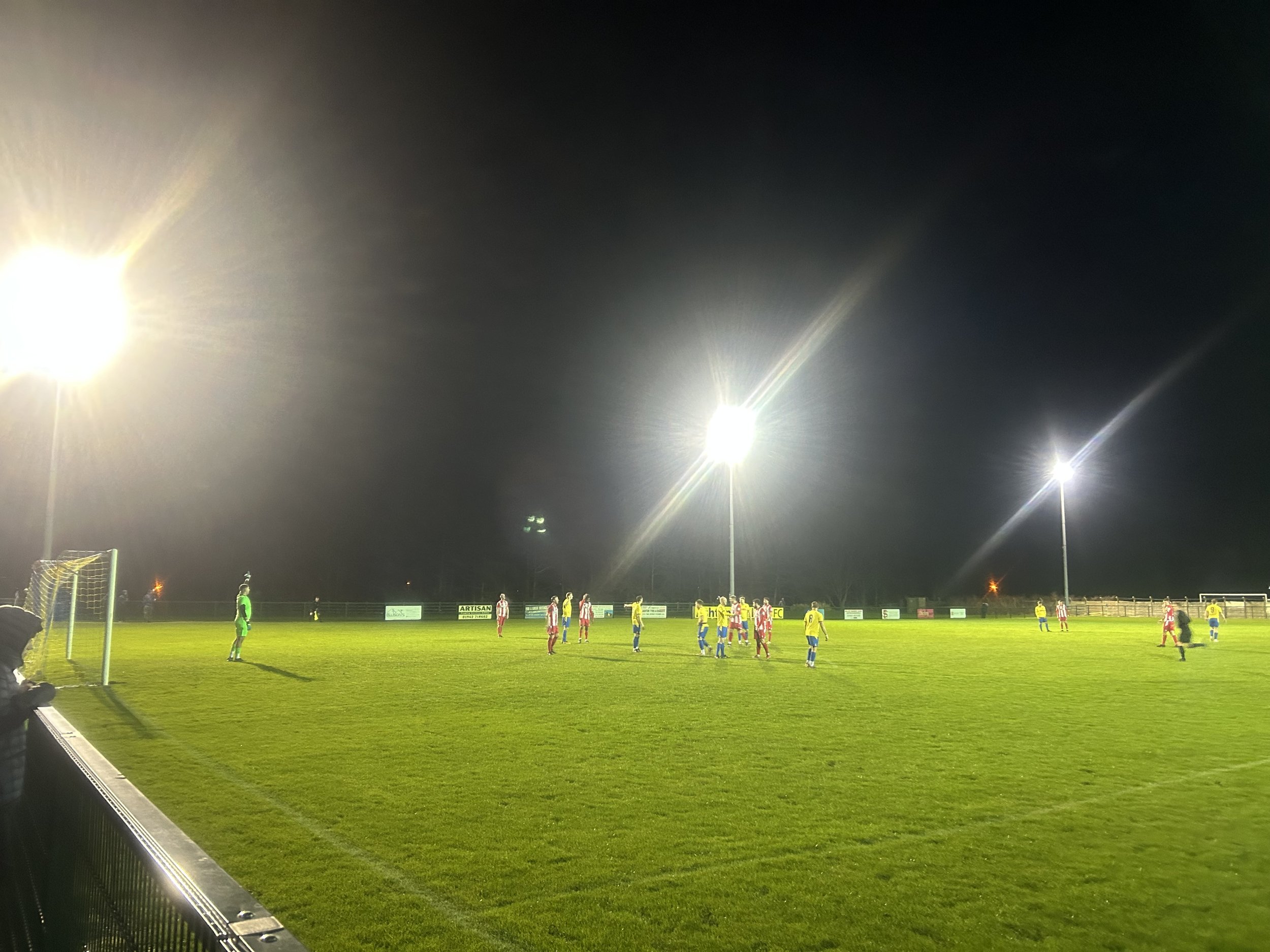
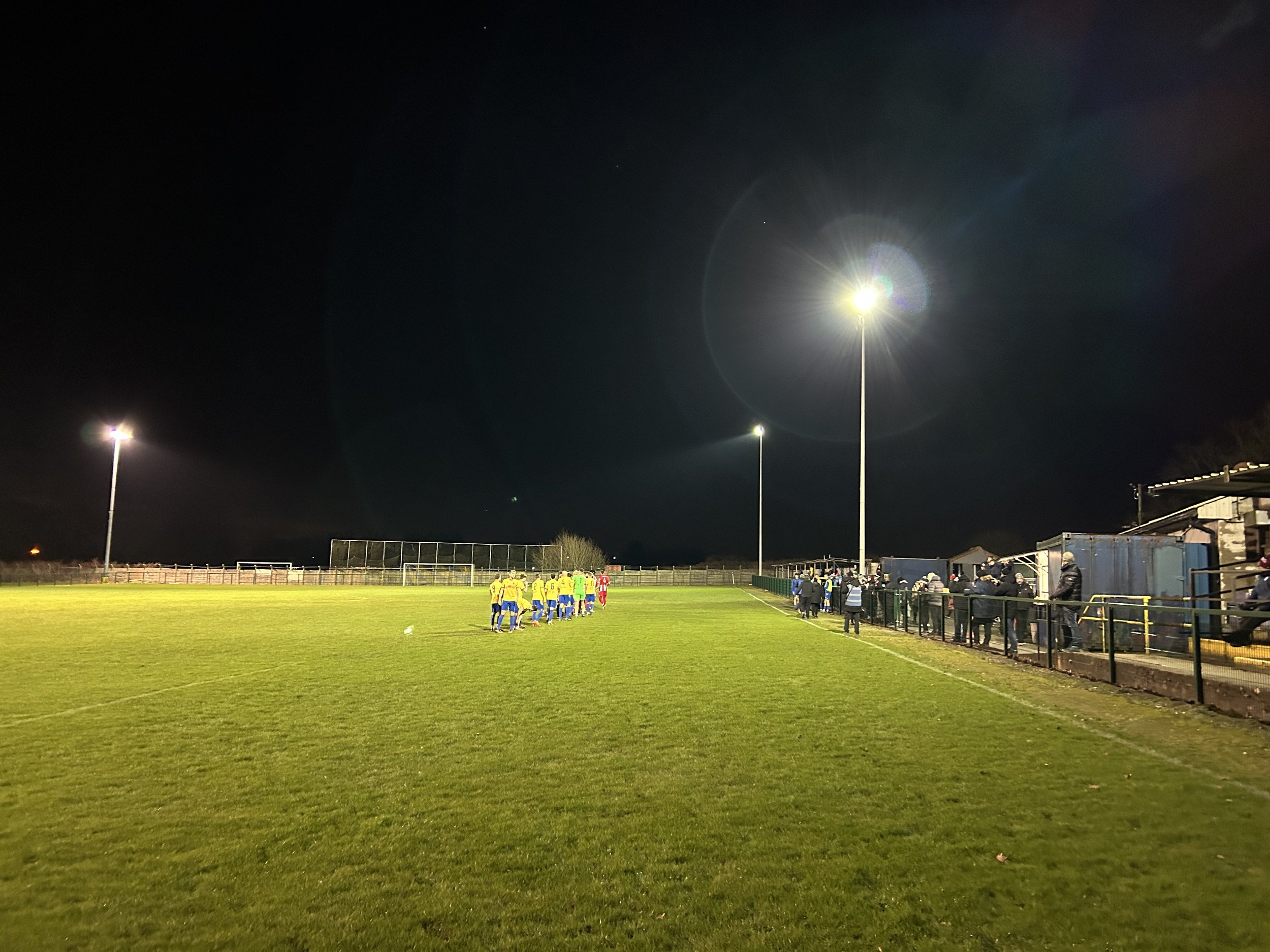

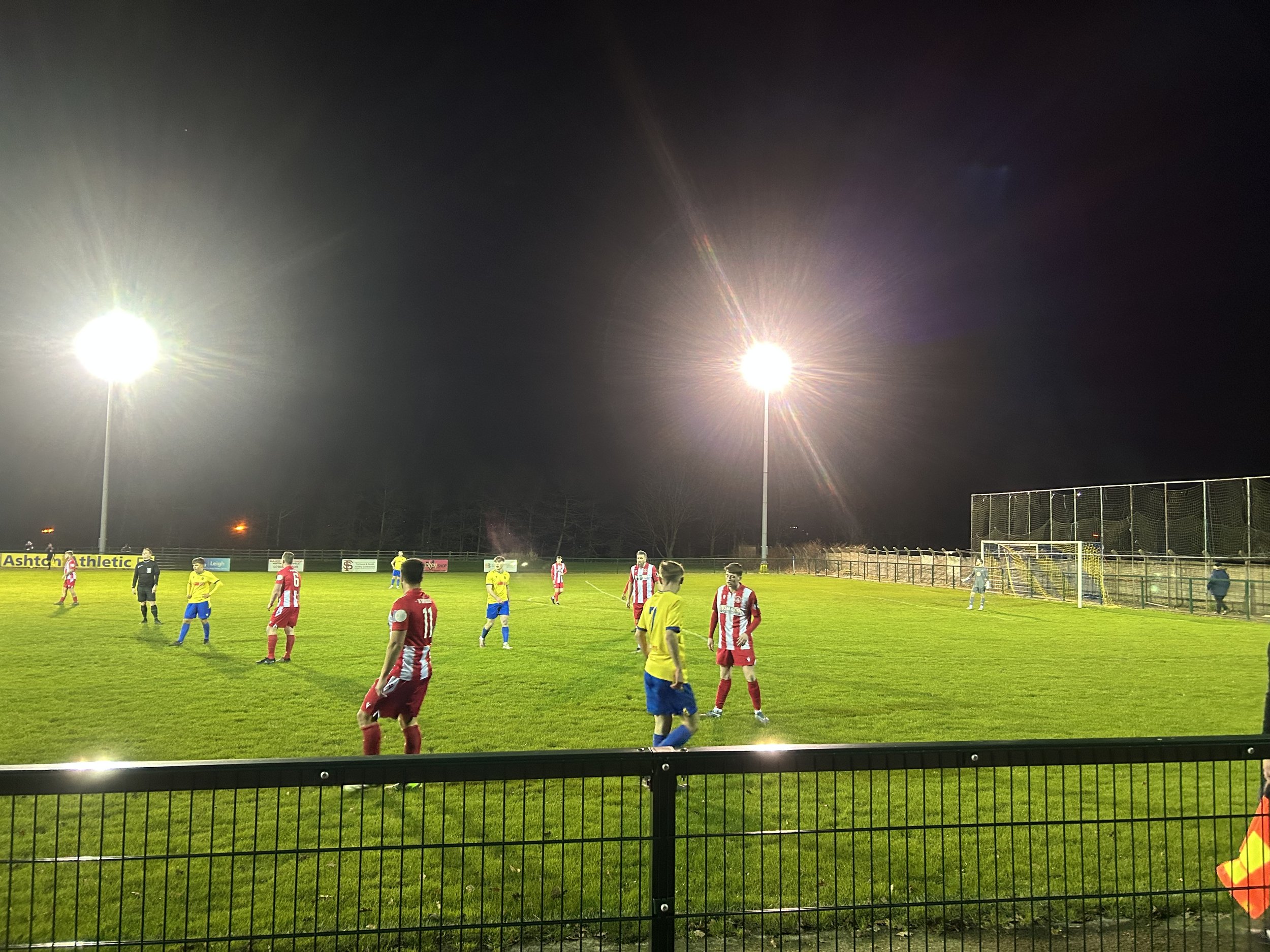
A level game set the match up for a potentially thrilling second half, however any ideas of a classic contest were extinguished by a blistering opening to the second period by Ashton Town. Firstly, a 47th minute wonder goal into the roof of the net by Lomax put Town ahead, and just three minutes later, the referee pointed to the spot and awarded Town a penalty, which Carl Peers duly converted.
Lomax’s strike was a thing of beauty. When the ball fell kindly on the edge of the box, he hit a perfeclty timed volley into the top corner, giving Yellows’ goalkeeper James Aspinall no chance. The penalty decision felt a little harsh, but it did not stop Peers from blasting it hard to Aspinall’s left, well out of his despairing reach.
Now in full command of the game, Ashton Town began to sit back, inviting a little bit of pressure from the hosts. Despite conceding a string of corners, Town looked in control, and they were able to deal with everything that came at them, thanks to some assured leadership from Mike Burke. In the 80th minute Ashton Town sealed the deal in somewhat controversial style. The ball appeared to go out of play for a throw in, just inside the Athletic half. However, the infringement was missed by the assistant and play was waved on despite protests from home supporters, coaches and players. The Yellows were given a harsh lesson in playing to the whistle, as only a few seconds after the controversy, substitute Jordan Southworth struck from close range to add a fourth.
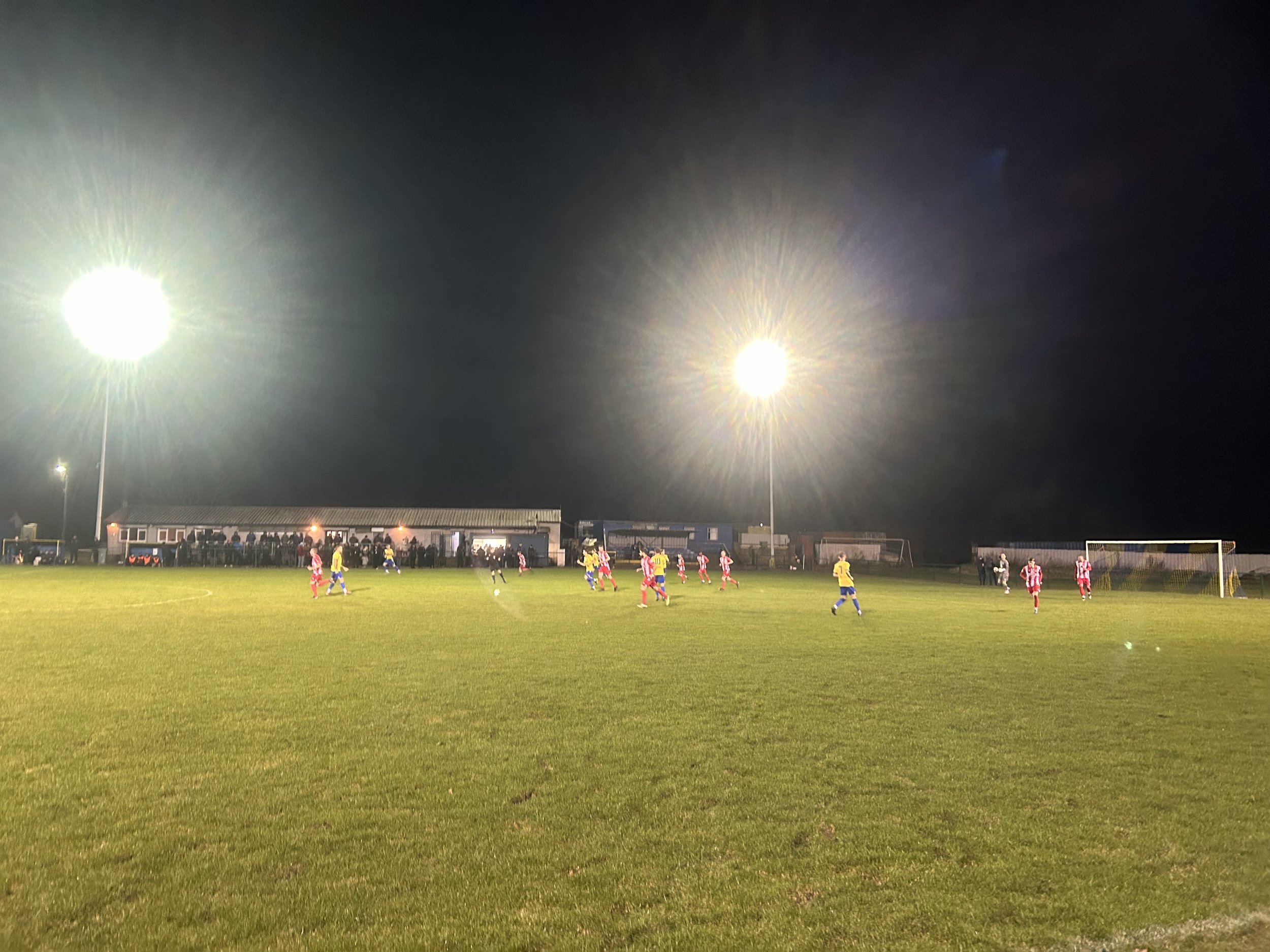
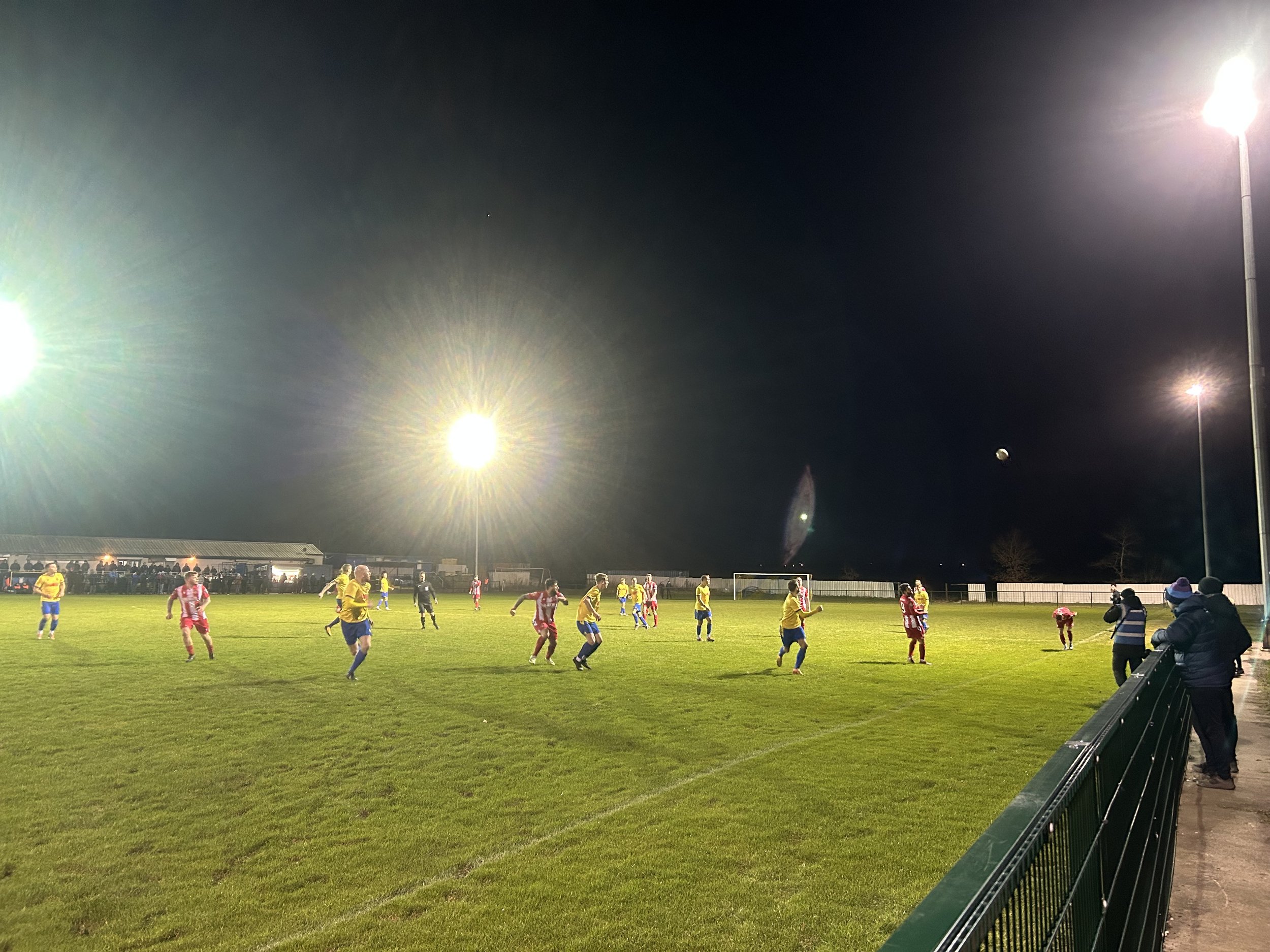
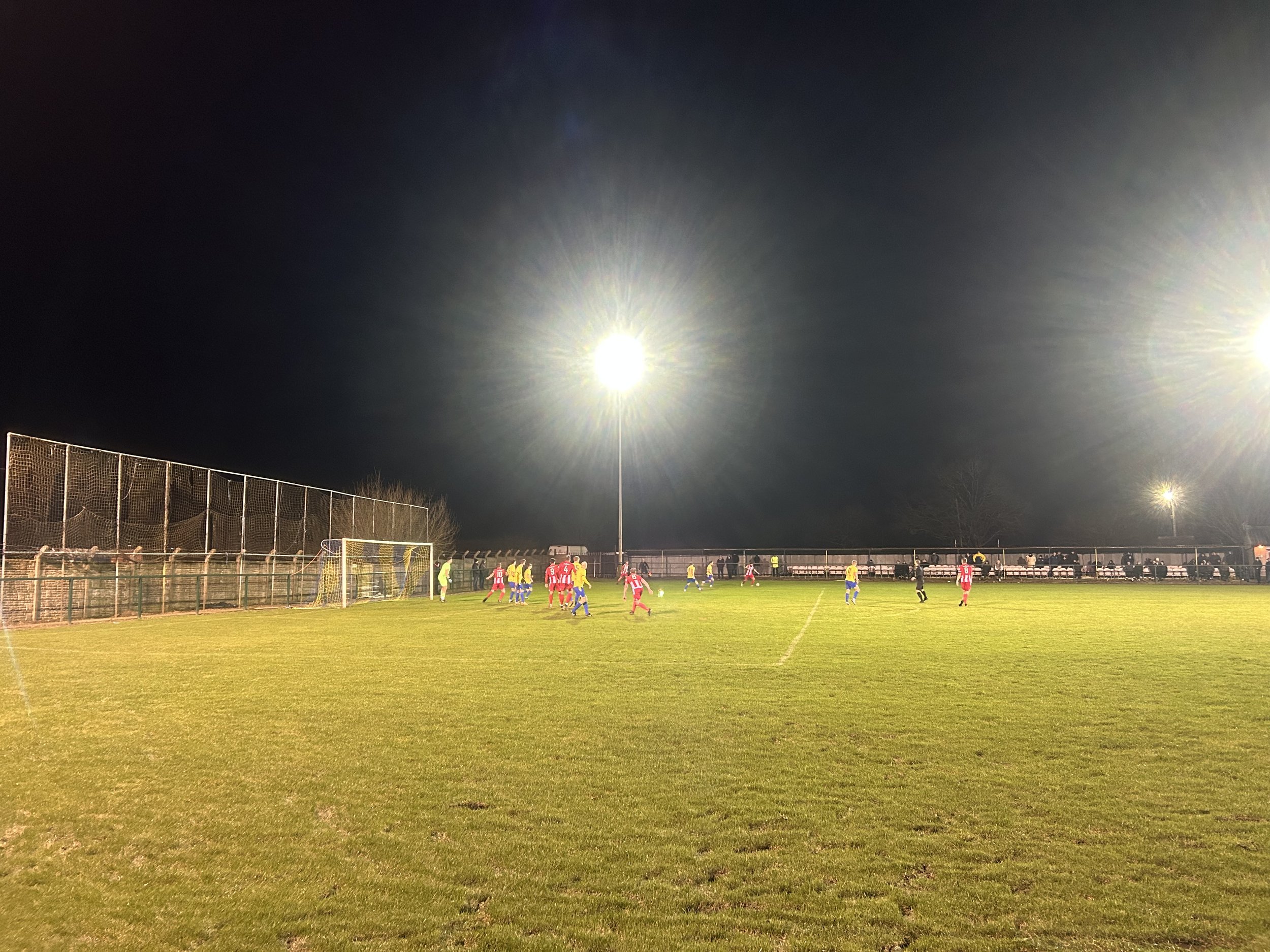
The match itself was a competitive affair, and although Town certainly edged the play, Athletic walked away probably believing that 4-1 slightly flattered their neighbours. It was also the Yellows’ largest home crowd of the season, which proves that despite the temperature and the time of year, people are still enthused about non-league football.
Brocstedes Park is also a fantastic place to watch football. The main stand, although tired looking in places, has a charm that can only be found in non-league, and the clubhouse provides welcome respite from the chill. The ability to watch the game from every angle around the pitch is not something that should be taken for granted at this level, so another plus point for the ground. Most importantly, everyone I encountered at the club was welcoming and friendly, greeting me with a tremendous level of genuine, appreciative grace.
Final score: Ashton Athletic 1-4 Ashton Town
Admission: £6
Programme: n/a
Attendance: 128








